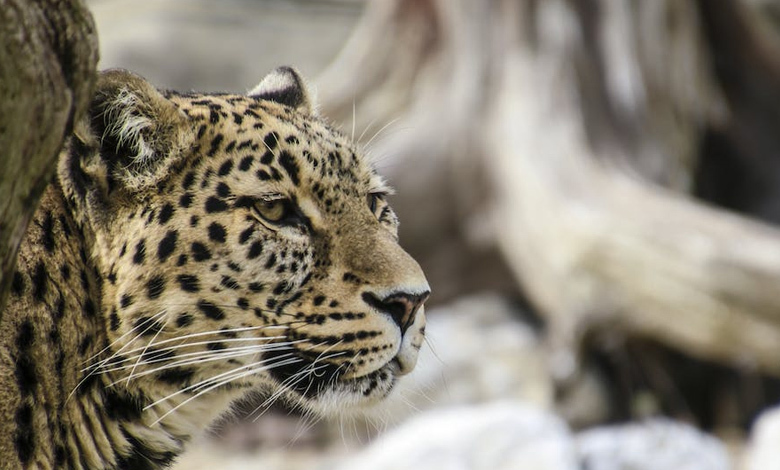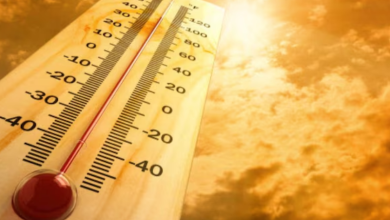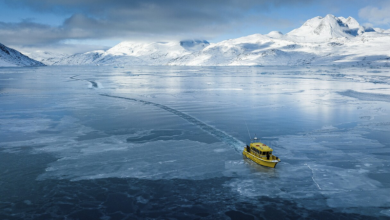Climate Change Forces Snow Leopards to New Heights, Study Shows

A new study has discovered a direct correlation between human activity, climate change, and snow leopard movement patterns. As an increased people attempt to get a closer look at these stunning cats, nestled in the higher Greater Himalayas, the cats are being forced further into the mountains.
The new study examined the temporal changes in the ranges of three carnivorous species. These are the common leopard (Panthera pardus), the elusive snow leopard (Panthera uncia), and the Asiatic black bear (Ursus thibetanus). It demonstrated the impact that both human activity and climate change have on these species.
According to the study, snow leopards have tended to seek refuge higher up and away from human habitation, but this is not the case for common leopards or black bears. There are now worries about how people and wildlife will interact because these species have migrated to lower, more vegetated areas, which has brought them closer to populated areas.
Higher elevations are more likely to see the extinction of the common leopard and the Asiatic black bear in their native ranges, according to the study. The locations of these carnivores were examined by researchers in two distinct eras: the early 1990s and the period between 2016 and 2017. This demonstrated how their residence has evolved. The study also demonstrates the significance of continuous glacial cover in maintaining a stable population of snow leopards and preventing the reduction of their range.
Read More: Silencing the Voice of Climate: Human Rights Advocates Decry European Actions
The Greater Himalayas are crucial for the protection of well-known species like snow leopards, particularly in the high-altitude Kishtwar National Park. Muzaffar A. Kichloo, the study’s lead author, emphasized a crucial point: although this region is isolated and sparsely populated, there are some human settlements there. The area experiences severe winters with plenty of snow and mild summers, which have a significant effect on the ecosystems and animal habitats.
Koustubh Sharma, Director of Science and Conservation at the Snow Leopards Trust, said that this study relied a lot on local observations and anecdotal evidence. This shows that it takes a unique approach to history. The study fits into the bigger picture of climate change in the mountains of Central and South Asia, which are warming faster than the rest of the world. Climate change, melting glaciers, and the shifting treeline all have different effects on snow leopards and make them compete with other large carnivores more.
Human-snow leopard conflicts have also gotten worse because melting glaciers have changed the herding landscape and forced herders to change how they do things. These encounters are very dangerous for snow leopards’ survival. Having positive feelings about these big cats is important for getting along with them, and climate change makes these threats even worse by making problems worse.
The study’s results have important policy implications for protecting and managing large carnivores in the Himalayas and other mountainous areas that face similar problems. To solve these problems, the study suggests using climate-adaptive conservation strategies. These could include changing the edges of protected areas, building climate-resilient corridors, and taking steps to protect glacial resources.
It is also important to keep an eye on how habitats change, how people and wildlife interact, where species live, and how resources are used for research all the time.
The researchers support policies that help people live together, like programs that pay people whose animals are killed by predators, educational campaigns, and conservation efforts that are run by the community. Promoting best practices for herding and long-term management of livestock can help reduce conflicts between humans and carnivores, making it easier for them to live together.
“Snow Leopards’ Response to Climate Change: Migration to Higher Altitudes”
The snow leopard and climate change study emphasizes the need for conservation of these majestic animals. Due to rising temperatures, their habitats are shrinking, so we must act now. To reduce carbon emissions and protect snow leopard ecosystems, governments, organizations, and individuals must collaborate. We can keep these elusive predators free in their natural habitat by addressing climate change. We must all help snow leopards and other endangered species survive for future generations.



